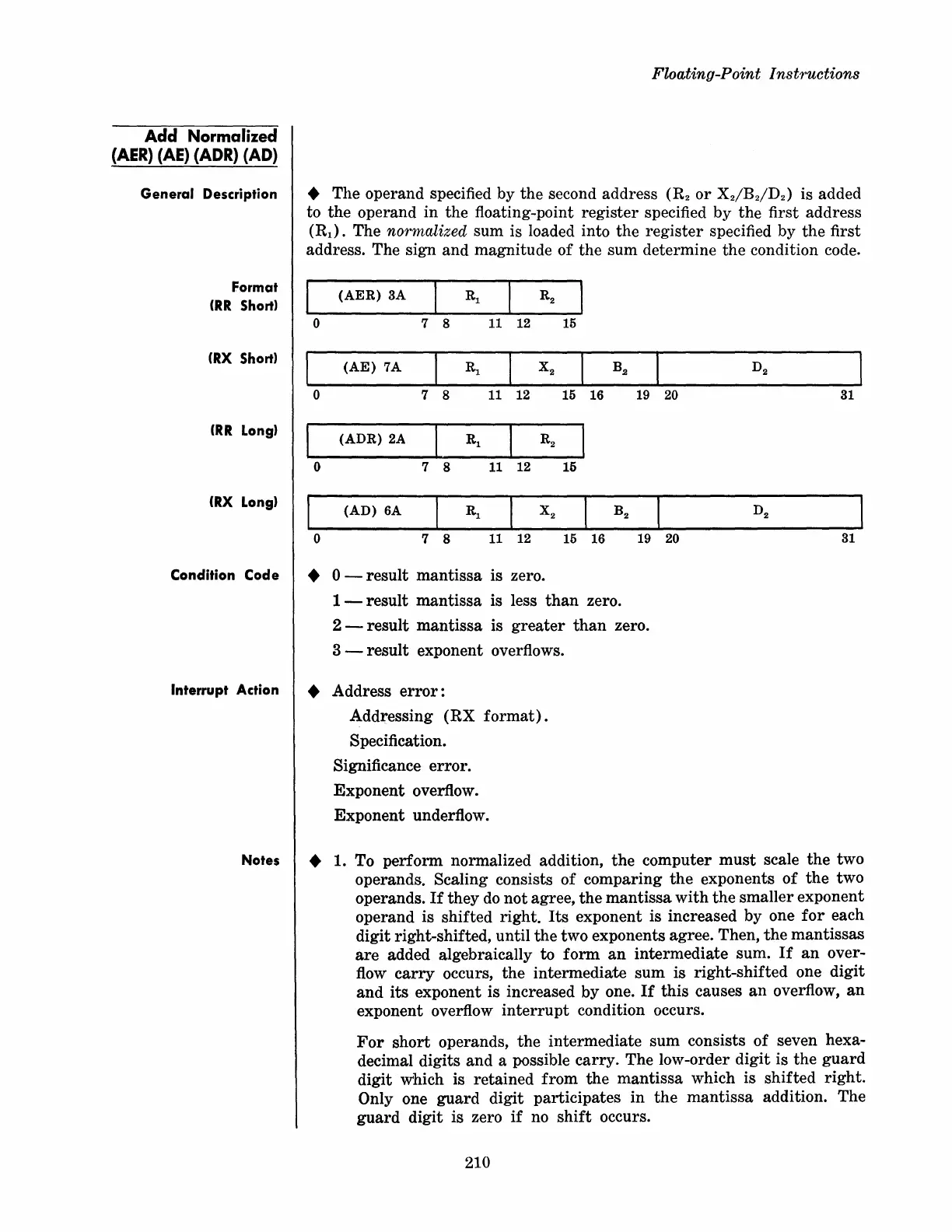Add Normalized
(AER)
(AE) (ADR) (AD)
General Description
Format
(RR
Short)
(RX Short)
(RR
Long)
(RX Long)
Condition Code
Interrupt
Action
Floating-Point Instructions
• The operand specified by
the
second address
(R
2
or
XdBdD
2
)
is added
to
the
operand in
the
floating-point
register
specified by
the
first address
(R
1
).
The normalized sum is loaded into
the
register
specified by
the
first
address. The sign
and
magnitude
of
the
sum determine
the
condition code.
(AER)
3A
R1
R2
0 7
8
11
12
15
(AE)
7A
R1
X
2
B2
0
7 8 11
12
15
16
19
20
31
(ADR)
2A
R1
R2
0 7
8 11
12
15
(AD)
6A
~
X
2
B2
0
7 8
11
12
15
16
19
20
31
•
o -
result
mantissa
is zero.
1 - result
mantissa
is less
than
zero.
2 - result
mantissa
is
greater
than
zero.
S - result exponent overflows.
•
Address
error:
Addressing (RX
format).
Specification.
Significance
error.
Exponent
overflow.
Exponent underflow.
Notes • 1. To
perform
normalized addition,
the
computer
must
scale
the
two
operands. Scaling consists
of
comparing
the
exponents
of
the
two
operands.
If
they
do
not
agree,
the
mantissa
with
the
smaller exponent
operand is shifted right.
Its
exponent is increased by one
for
each
digit right-shifted, until
the
two exponents agree. Then,
the
mantissas
are
added algebraically
to
form
an
intermediate sum.
If
an
over-
flow
carry
occurs,
the
intermediate
sum
is right-shifted one digit
and
its
exponent is increased by one.
If
this
causes
an
overflow,
an
exponent overflow
interrupt
condition occurs.
For
short
operands,
the
intermediate sum consists of seven hexa-
decimal digits
and
a possible carry. The low-order
digit
is
the
guard
digit which is retained
from
the
mantissa which is shifted
right.
Only one
guard
digit participates in
the
mantissa
addition. The
guard
digit is zero
if
no
shift
occurs.
210

